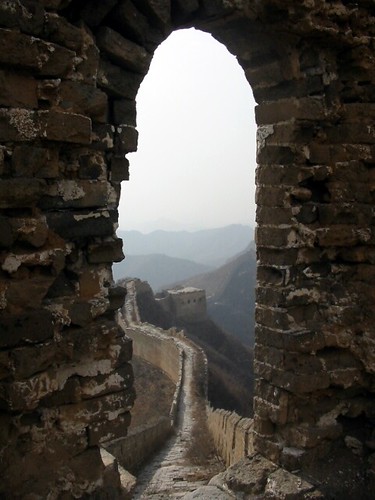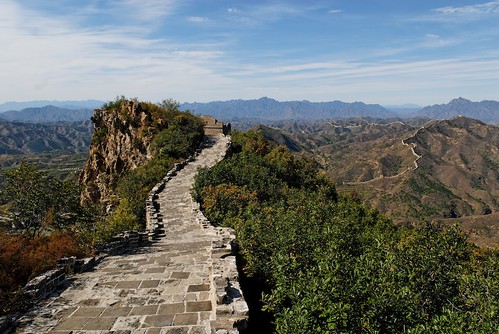According to historical records, in 908 a section of the Great Wall on the Nanguanling Town of Liaoning Province at the confluence of the Bohai Sea and the Yellow Sea (Huanghai Sea) was built during the Liao Dynasty (907-1125). In 1026, the nomadic Nuzhen who occupied territory to the northeast of China built several fortresses and beacon towers to prevent invasion. The fortresses and beacon towers formed part of the defense system of the Great Wall. At this time the Wall stretched from White City (Bai Cheng) Village of Acheng City of Heilongjiang Province in the north to Nongan County of Jilin Province in the south.
The Great Wall of the Jin Dynasty
In 1115, the Nuzhen nomadic established the Jin Dynasty (1115-1234). In order to prevent incursion from their neighbors, the Mongols, a large construction program was launched. The records show that two important sections of the Great wall were completed.
The Wall as constructed by the Jin differed from the previous sections. Known as the Border Fortress or the Boundary Ditch of the Jin, it was formed by digging ditches within which lengths of wall were built. In some places subsidiary walls and ditches were added for extra strength. The construction of the Great Wall by the Jin Dynasty was started in about 1123 and completed by about 1198. The two sections attributable to the Jin Dynasty are known as the Mingchang Old Wall and the Mingchang New Wall.
The Mingchang Old Wall: Also called the Border Fortress of the Jin, this section is located to the north of the Mingchang New Wall. It is near today's Heilongjiang River northwest of the Xing'an Mountains in Heilongjiang Province. It stretched about 500 kilometers (311 miles).
The Mingchang New Wall: Also called the Inner Wall of Jin, it was also built to prevent attack from the Mongols, the whole wall stretched about 1,500 kilometers (932 miles), starting from Hetao area of Inner Mongolia at the west, passing provinces and autonomous regions such as Shaanxi, Shanxi, Hebei, Inner Mongolia, Liaoning and Heilongjiang and ending at the Songhua River of Heilongjiang Province.
great wall of china

Today, the site of the Great Wall of the Jin Dynasty can be found in Xilinhaute City of Xilin Gol League of Inner Mongolia.
With the advent of the Mongol Yuan Dynasty (1279-1368), there was no further need to extend the border defenses, as their territory spanned parts of both Europe and Asia. The next era of construction was to follow when the rule of the Ming was established.
great wall of china

great wall of china

0 comments:
Post a Comment